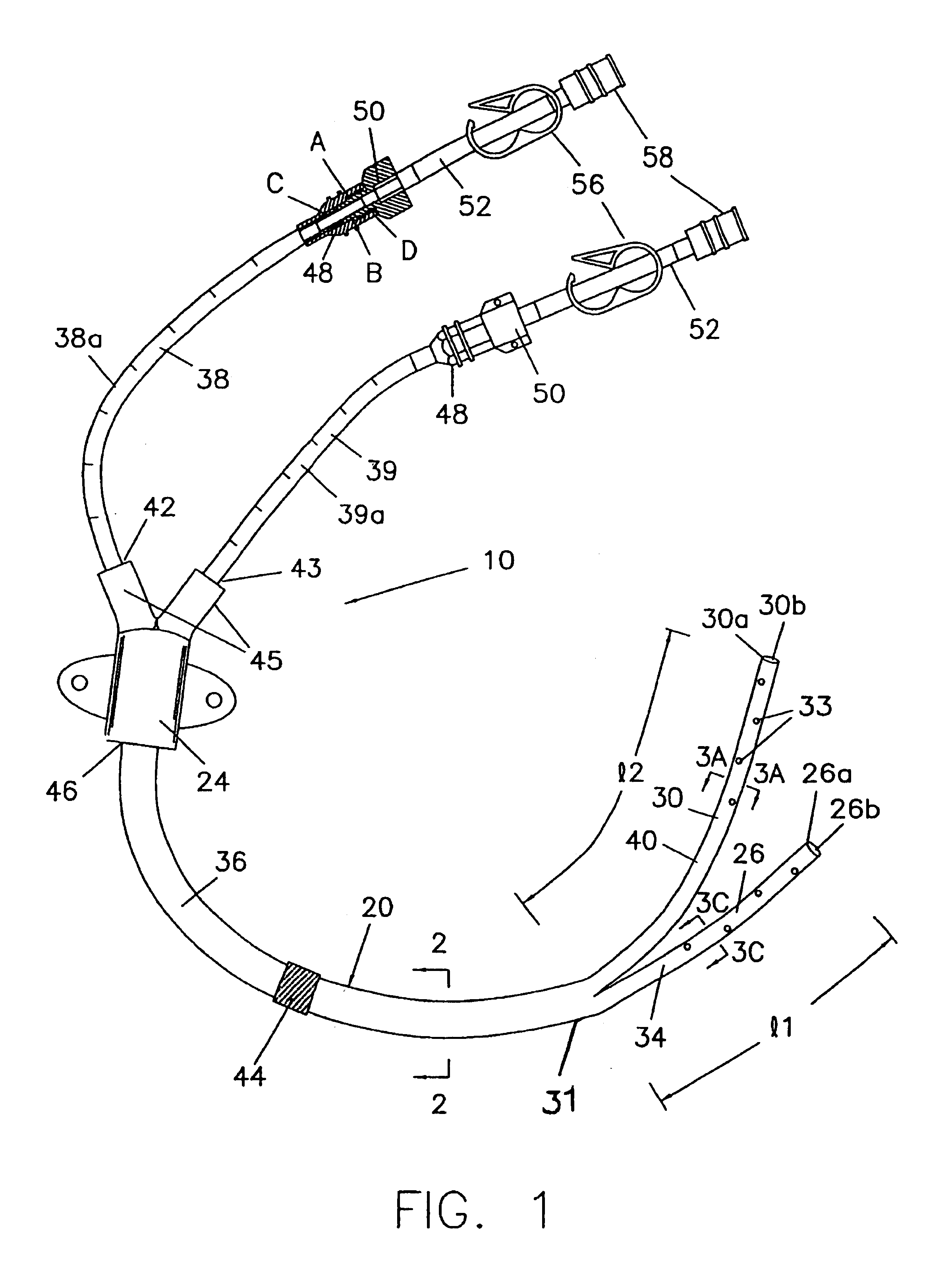Multilumen catheter assembly and methods for making and inserting the same
a multi-lumen catheter and assembly technology, applied in the direction of multi-lumen catheters, catheters, suction devices, etc., can solve the problems of increasing the attendant risks of catheterization procedures, affecting the safety of patients, and unable to achieve the effect of a single techniqu
- Summary
- Abstract
- Description
- Claims
- Application Information
AI Technical Summary
Benefits of technology
Problems solved by technology
Method used
Image
Examples
Embodiment Construction
[0032]Certain terminology is used herein for convenience only and is not to be taken as a limitation on the present invention. The words “right,”“left,”“outwardly” and “inwardly” designate directions in the drawings to which reference is made. The words “proximal” and “distal” refer to directions away from and closer to, respectively, the insertion tips of the first and second catheters in the multiple catheter assembly according to the present invention. The terminology includes the words above specifically mentioned, derivatives thereof, and words of similar import.
[0033]The following describes preferred embodiments of the invention. However, it should be understood, based on this disclosure, that the invention is not limited by the preferred embodiments described herein. Referring now: to the drawings in detail, there are shown in FIG. 1, a preferred embodiment of a multilumen catheter assembly generally indicated as 10, according to the invention. The multilumen catheter assembl...
PUM
 Login to View More
Login to View More Abstract
Description
Claims
Application Information
 Login to View More
Login to View More - R&D
- Intellectual Property
- Life Sciences
- Materials
- Tech Scout
- Unparalleled Data Quality
- Higher Quality Content
- 60% Fewer Hallucinations
Browse by: Latest US Patents, China's latest patents, Technical Efficacy Thesaurus, Application Domain, Technology Topic, Popular Technical Reports.
© 2025 PatSnap. All rights reserved.Legal|Privacy policy|Modern Slavery Act Transparency Statement|Sitemap|About US| Contact US: help@patsnap.com



